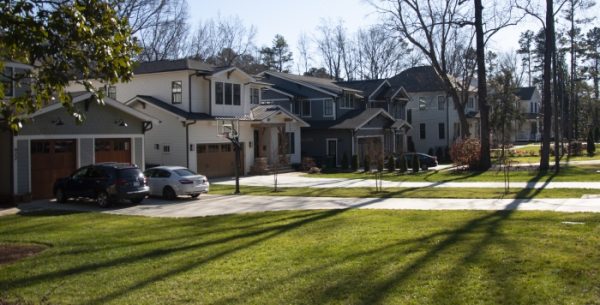A Brief HunterWood history lession

HunterWood and several surrounding neighborhoods were carved from 200 acres once owned by the Hunter family, whose homestead still stands on Charlotte’s Sardis Road. The Rev. John Hunter, installed as the minister at nearby Sardis Presbyterian Church in 1859, began assembling the property during the Civil War in the 1860s and lived there until he died in 1890, according to an overview prepared by the Charlotte-Mecklenburg County Historic Landmarks Commission.
He left the property to his son, Lester Walker Hunter, the youngest of the preacher’s four children and a country doctor, the overview said.
Lester had 10 children, some of whom farmed the 200 acres, growing cotton and other crops.
Hunter Lane and Wonderwood Drive were still dirt in the late 1940s and ‘50s when several Charlotte notables settled here to raise their families. They included Leon Gutmann, who owned Gutmann Galleries, specializing in art and antiques. He and wife Dorothy were known for their garden on Hunter Lane, involvement in the arts, lavish parties and philanthropy. Just up Hunter lived Josh Birmingham, the airport manager who took over a municipal airport with 75 daily flights and turned it into Charlotte Douglas International Airport, with 500 flights a day when he died in 1992.
Guttman’s house is gone, except for a screened porch. Birmingham’s house remains.
And on Wonderwood, there was Loonis McGlohon, the globe-trotting jazz performer who wrote beloved songs such as “Songbird,” “The Wine of May” and “Where is the Child I Used to Hold.” McGlohon (Spirit Square’s theater uptown is named for him) and wife Nan, both raised in eastern North Carolina, considered living in New York but chose to raise their three children on Wonderwood in the house they built on two acres in 1956, when cows and a bull named Charlie grazed out back.
The house, 1950s Cotswold with three compact bedrooms, became a stop-off from the road for many of the world’s great musicians, singers and journalists. The list included roving CBS reporter and close McGlohon friend Charles Kuralt (a Charlotte native), composer and McGlohon collaborator Alec Wilder, singers Eileen Farrell and Marlene VerPlanck, and actors Jim Nabors and Jose Ferrer.
Out back, there was a pool and studio, Loonis’ personal refuge. In 2001, that’s where I found Loonis rehearsing songs he’d play in a few days during his induction into the North Carolina Society of New York. He’d battled cancer for years and had just received bad news that it was back. I recall he complained about pain, and didn’t want to go to New York. But when he sat at his piano, you’d never know he was sick.
The McGlohon house is gone too, except for the footprint of the foundation, on which an ode to mid-century modernist architecture was built.
David Perlmutt